EDITOR’S NOTE: This reflection on Holy Week was written in 1998 by Dr. Constance Tarasar, who chaired the Orthodox Church in America’s Department of Christian Education and served as Executive Secretary of the Orthodox Christian Education Commission for many years before her repose in 2014. The text also is available in PDF format for reproduction and distribution.
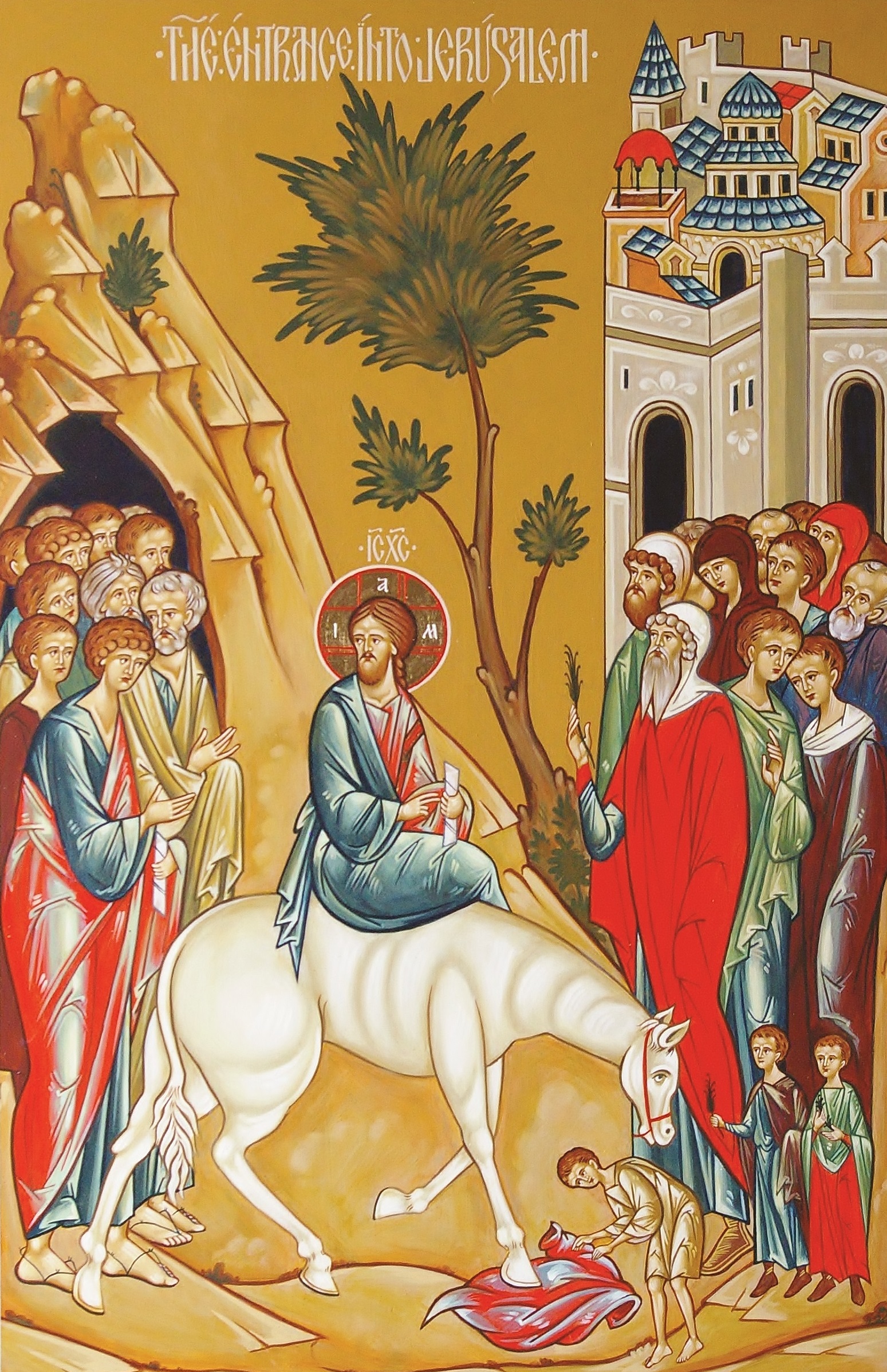
Holy Week opens with a two-day celebration of the Raising of Lazarus and the Entry of Our Lord into Jerusalem. During Vespers of Lazarus Saturday, the following hymn is sung.
We have completed the forty days which profit our souls. Now let us beg the lover of man; enable us to see the Holy Week of Thy passion, that we may glorify Thy mighty work, Thy wonderful plan for our salvation, singing with one heart and voice, O Lord, Glory to Thee!
The Troparion for the feast is the same for both days.
By raising Lazarus from the dead before Thy Passion, Thou didst confirm the universal resurrection, O Christ God! Like the children with the palms of victory, we cry out to Thee: O Vanquisher of Death: Hosanna in the highest! Blessed is He that comes in the name of the Lord!
This theme is also reflected in the festal Hymn to the Theotokos.
God is the Lord and has revealed Himself to us. Celebrate the feast and come with gladness. Let us magnify Christ with palms and branches, singing: Blessed is He that comes in the name of the Lord!
Great and Holy Monday, Tuesday and Wednesday
The services of these first three days are called the “Bridegroom Services,” for the theme of the two hymns that are repeated each evening refer to Christ, the Bridegroom, Who comes at midnight.
Behold! The Bridegroom comes at midnight, and blessed is the servant whom He shall find watching; and again, unworthy is the servant whom He shall find heedless. Beware, therefore, O my soul, do not be weighed down with sleep, lest you be given up to death, and lest you be shut out of the Kingdom. But rouse yourself, crying: “Holy! Holy! Holy! art Thou, O our God, through the Theotokos, have mercy on us!”
Thy Bridal Chamber I see adorned, O my Savior, but I have no wedding garment that I may enter, O Giver of Light, enlighten the vesture of my soul and save me.
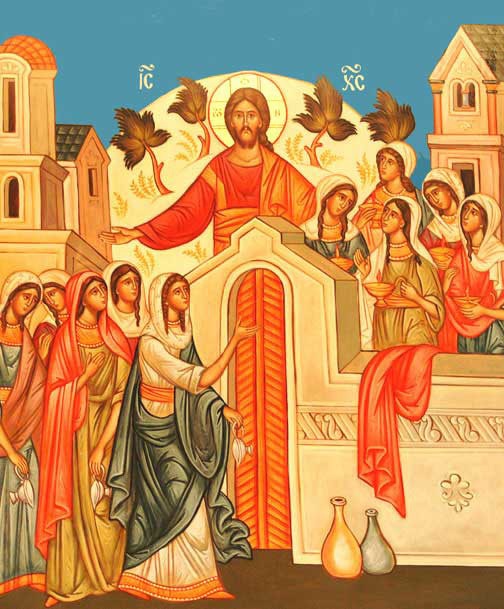
The other major theme of the Gospel readings is the “End,” the time of Judgment. The Bridegroom comes at midnight, in the darkness, to judge all people by the light of His truth. The verses call us to be prepared and watch, for we know not the day nor the hour when the Lord will come [John 12:31-36; Matthew 25:13].
The Gospels for the first three days of Holy Week further develop these themes.
During Monday’s Matins, we read Matthew 21:18-43, in which we hear about the fig tree that bore no fruit—a symbol of the world that was created to bear spiritual fruits but failed in its response to God. At the Presanctified Liturgy, we hear of the signs and announcement of the “End” in the Gospel reading—Matthew 24:3-35. “Heaven and earth shall pass away, but my words shall not pass away.”
Matthew 22:15-23, 39 is read during Tuesday’s Matins. In it, Our Lord condemns the blind and hypocritical religion of the Pharisees, who see themselves as leaders and the light of the world, but who instead “shut up the Kingdom of heaven to men.” Two parables—that of the Wise and Foolish Virgins and the Last Judgment [Matthew 24:36-26:2] are read during the Presanctified Liturgy. The first reveals the the need to be ready and prepared for the coming of the Bridegroom, while the second reminds us that we will be called to account for how we have loved and served others.
In John 12:17-50, read at Wednesday’s Matins, Jesus says: “Now is the judgment of the world.” He came as light into the world, but those who prefer the darkness and do not believe Him, or the Father Who sent Him, will face judgment by His Word. During the Presanctified Liturgy, we remember the woman who poured the precious oil on Jesus [Matthew 26:6-16] as the image of love and repentance which unites us with Him. She is contrasted with Judas, who betrayed Christ out of his love for money.
Great and Holy Thursday
The main theme of Great and Holy Thursday commemorates the Lord’s Supper. It is found in two major hymns of the day.
Of Thy Mystical Supper, O Son of God, accept me today as a communicant, for I will not speak of Thy Mystery to Thine enemies, neither like Judas will I give Thee a kiss; but like the thief will I confess Thee: Remember me, O Lord, in Thy Kingdom.
Come, O faithful. Let us enjoy the Master’s hospitality: the Banquet of Immortality! In the upper chamber with uplifted minds, let us receive the exalted words of the Word, Whom we magnify!
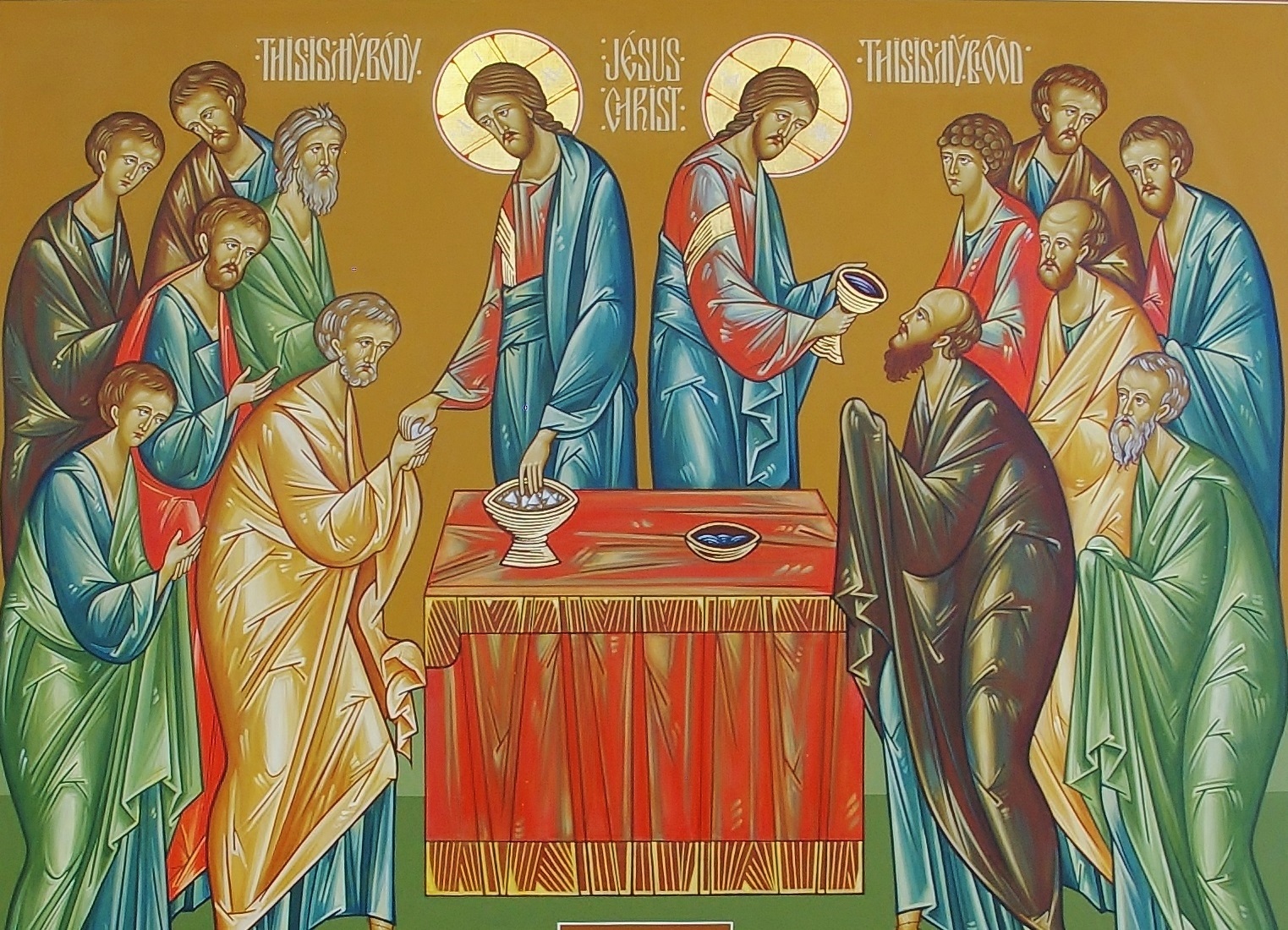
On this last night with His disciples, Christ took bread, and blessed, and broke it. He gave it to His disciples and said, “Take, eat; this is my Body.” And He took a cup, and when He had given thanks, He gave it to them, saying, “Drink of it, all of you; for this is my blood of the new covenant, which is poured out for many for the forgiveness of sins.” After the supper, Jesus led the disciples out to the Garden of Gethsemane to pray. It was there that Judas came and betrayed Him to the soldiers.
The Lord’s Supper is commemorated during the Vesperal Divine Liturgy on Thursday morning. In some cathedral churches, following the Liturgy, the bishop washes the feet of 12 priests, following the example of Christ Who, as a servant, washed the feet of His disciples.
Great, Holy and Good Friday Matins
Matins of Great, Holy and Good Friday consists of 12 readings from the Gospels that recall the final instructions of Jesus to His disciples during the supper. They include the accounts of the betrayal of Jesus by Judas and His trials before the High Priest and Pilate, the governor. The gospels continue with the readings about His crucifixion, death and burial. In between the readings are hymns giving the meaning of these events for our life. The church bells are also tolled at each gospel, according to the number of each reading.
The Cross is placed in the center of the Church during Matins. In some churches, it is carried out in procession during the singing of a beautiful hymn for the 15th Antiphon, between the fifth and sixth Gospel readings.
Today He Who hung the earth upon the waters is hung on the tree.
The King of the angels is decked with a crown of thorns.
He who wraps the heavens in clouds is wrapped in the purple of mockery.
He who freed Adam in the Jordan is slapped on the face.
The Bridegroom of the Church is affixed to the Cross with nails.
The Son of the Virgin is pierced by a spear.
We worship Thy passion, O Christ.
We worship Thy passion, O Christ.
We worship Thy passion, O Christ.
Show us also Thy glorious resurrection.
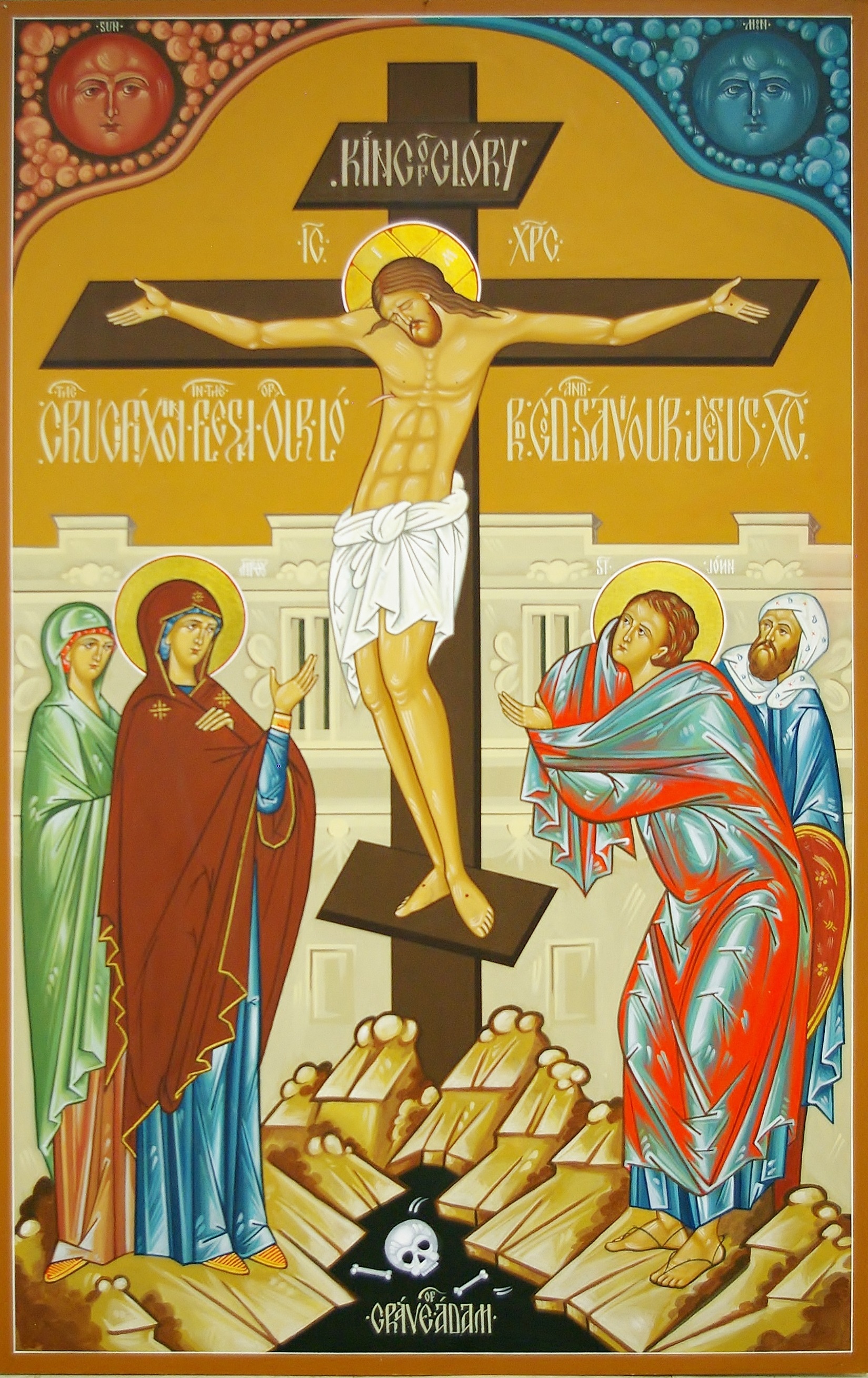
The Exaposteilarion [Hymn of Light] tells us that it is never too late to repent and to ask for God’s forgiveness, for Christ forgave the thief on the Cross who said: “Remember me, O Lord, in Thy Kingdom.” Jesus answered, saying, “Truly, I say to you, today you will be with me in Paradise.”
The wise thief didst Thou make worthy of Paradise in a single moment, O Lord. By the wood of Thy Cross, illumine me as well, and save me.
Great, Holy and Good Friday Vespers
During Vespers, we remember the death and burial of the Lord. Towards the end of the service, with the singing of “The Noble Joseph,” the clergy bring the shroud with the image of Christ’s Body from the altar and place it on a tomb in the center of the church. The people kneel as the procession passes by, as this hymn is sung.
The noble Joseph, when he had taken down Thy most pure Body from the tree, wrapped it in fine linen, and anointed it with spices, and placed it in a new tomb.
The angel came to the myrrh-bearing women at the tomb and said, “Myrrh is meet for the dead, but Christ has shown Himself a stranger to corruption.
The Three Days Pascha
The Three Days Pascha is the period of time from Christ’s death and descent into Hades to the time of His resurrection from the dead. It is summarized very briefly in the first Ode of the Paschal Kanon.
On this day of resurrection, be illumined O people! Pascha, the Pascha of the Lord! From death to life, and from earth to heaven, has Christ our God led us, singing the song of victory: Christ is risen from the dead!
The three days of Holy Friday, Saturday, and Sunday, the Day of Resurrection, are the days when this journey or passage “from death to life and from earth to heaven” is revealed in Christ’s death, descent into Hades, and resurrection from the dead. But it also foretells our resurrection from the dead and our ascension into heaven to be with Christ forever.
Great and Holy Saturday Matins
The resurrection of Christ and the granting of new life to those in Hades begins on this middle day between the death of the Lord and the announcement of His resurrection at the empty tomb. The resurrection of the dead begins in the depths of Hades, where Christ goes to defeat the very power of death. In Saturday’s Matins, celebrated on Friday evening, we hear these words in a long series of hymns chanted between the verses of Psalm 118. They give us a picture of Christ coming to earth to find His friend Adam. But Adam and his descendants have died; after their expulsion from the Garden, they could no longer live forever with God. So Christ comes to save us by dying for us. He descends to the place of death itself to find Adam and to raise the dead by destroying the very power of death, as we hear in these hymns.
Wishing to save Adam, Thou didst come down to earth. Not finding him on earth, O Master, Thou didst descend to Hades seeking him.
Adam was greatly afraid when God walked in Paradise. Now, with joy he sees God stalking Hades’ depths. There he fell, but here he is raised up.
Great and Holy Saturday Vesperal Divine Liturgy
The lengthy Vesperal Liturgy of Saint Basil the Great, celebrated on Great and Holy Saturday, has several important elements.
The verses sung at the beginning of Vespers announce the battle in Hades between Christ and the power of death and Christ’s victory over death. The 15 Readings from the Old Testament that follow speak of God creating life “in the beginning.” They include stories about water, light, and prophecies that reveal God’s power and His desire to save people and bring them into the light. They include the crossing of the Red Sea, Jonah and the people of Nineveh, Elijah and Elisha who each brought a boy back to life, God sparing Abraham’s son, Jeremiah’s prophecy of the new covenant God makes with His people, and the Three Young Men in the Furnace.
In place of the Trisagion, the baptismal hymn is sung: “As many as have been baptized into Christ have put on Christ. Alleluia!” followed by the Epistle lesson on Baptism.
Do you know that all of us who have been baptized into Christ Jesus were baptized into His death? We were buried therefore with Him by baptism into death, so that as Christ was raised from the dead by the glory of the Father, we too might walk in newness of life….
The climax of Holy Saturday comes when the Prokeimenon announces: “Arise, O God, judge the earth, for to Thee belong all the nations.” At this point, all the vestments of the clergy and servers and the cloths on the Altar and analogia are changed from dark to white, for the resurrection has already begun in Hades and will soon be announced to us. Immediately we hear the Gospel reading from Matthew 28:1-20, in which the news of Christ’s resurrection is given to the Myrrhbearing Women at the tomb. As the Liturgy continues, we are reminded that the tomb is still present in the center of the church. Christ’s work in Hades has begun, yet we must wait to hear the Good News. In place of the Cherubic Hymn, these words are sung, and the Entrance with the Holy Gifts is done in silence, with no commemorations said.
Let all mortal flesh keep silent, and in fear and trembling stand, pondering nothing earthly minded. For the King of kings and the Lord of lords comes to be slain, to give Himself as food to the faithful. Before Him go the ranks of angels, all the principalities and powers, the many-eyed cherubim and the six-winged seraphim, covering their faces, singing the hymn: Alleluia!
After the Holy Gifts are consecrated, the beautiful hymn to the Mother of God is sung.
Do not lament me, O Mother, seeing me in the tomb, the Son conceived in the womb without seed. For I shall arise and be glorified with eternal glory as God. I shall exalt all who magnify you in faith and love.
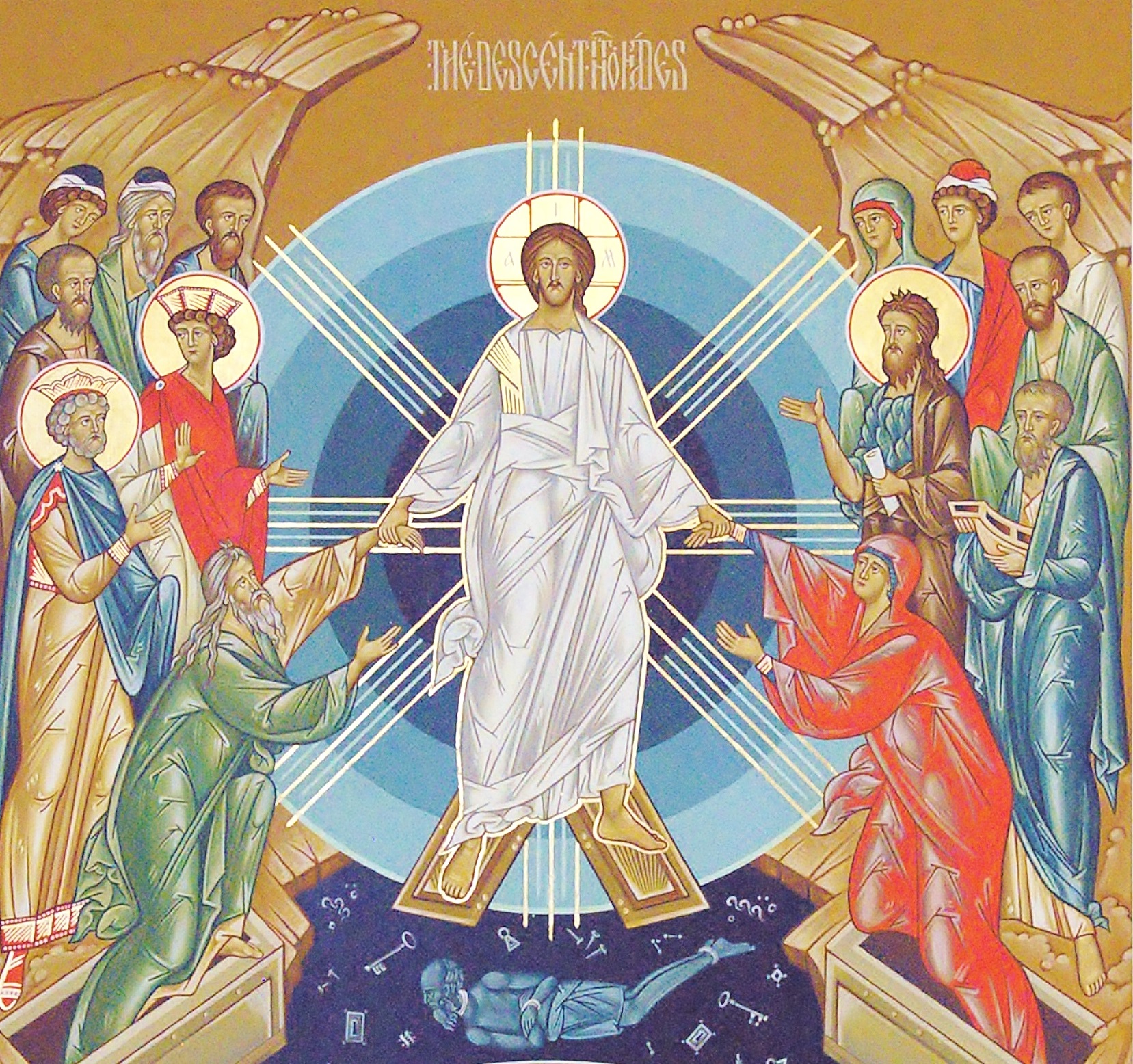
We have several hours until the late evening to wait for the joyful news. In the meantime, the church will be dark. At midnight, the light from candles begins to illumine the church. Outside in procession, the light of our candles also illumines the darkness, as we anticipate the resurrection by singing, “Thy resurrection, O Christ our Savior, the angels in heaven sing. Enable us on earth to glorify Thee in purity of heart.” Then, after circling the church, we hear these joyful words: “Christ is risen from the dead, trampling down death by death, and upon those in the tombs, bestowing life! Christ is Risen! Indeed, He is Risen!” The joyful hymns of the Paschal Kanon are sung as the clergy cense the church over and over again.
Finally, as the Paschal Matins service ends, the Paschal Verses are sung.
This is the day of resurrection, let us be illumined by the feast. Let us embrace each other. Let us call “brothers” even those that hate us, and forgive all by the resurrection, and so, let us cry: Christ is risen from the dead, trampling down death by death, and upon those in the tombs bestowing life!
Saint John Chrysostom’s Paschal Homily is read, in which we hear that essential question, “O Death, where is your sting? O Hell, where is your victory? Christ is risen and you are overthrown! Christ is risen and the demons are fallen! Christ is risen, and the angels rejoice! Christ is risen and life reigns! Christ is risen and not one dead remains in the grave! For Christ, being risen from the dead, is become the first fruits of those who have fallen asleep. To Him be glory and dominion unto ages of ages. Amen.”
